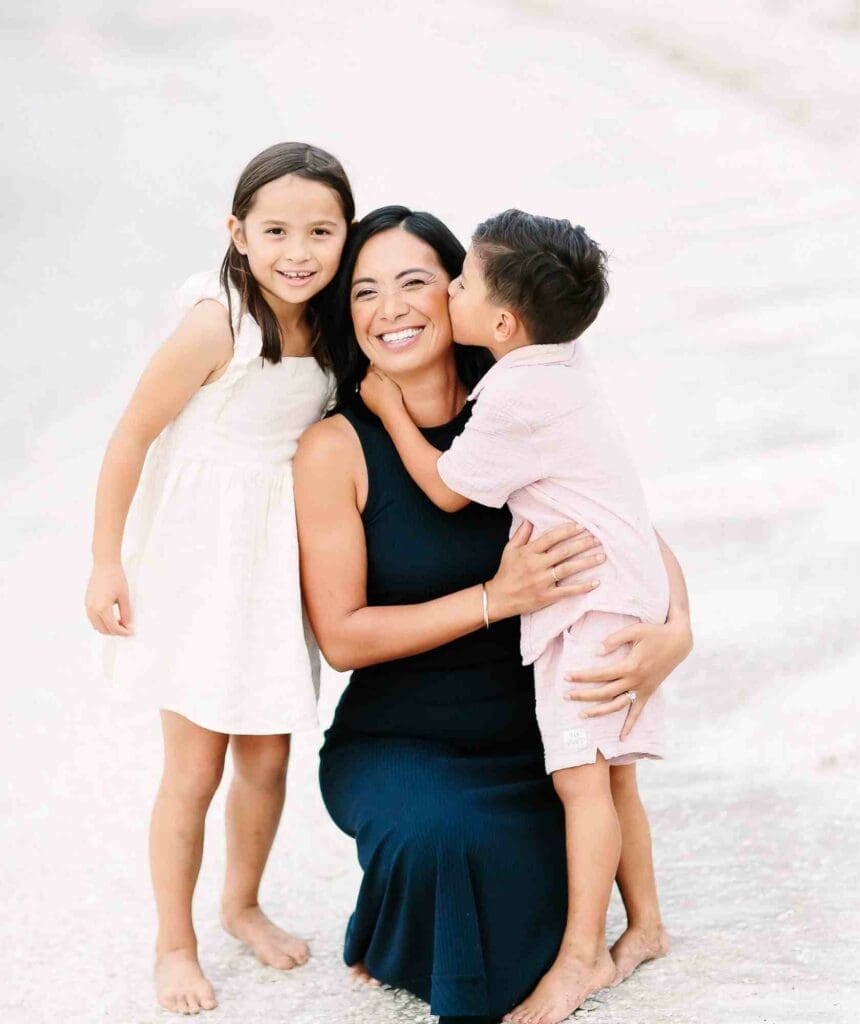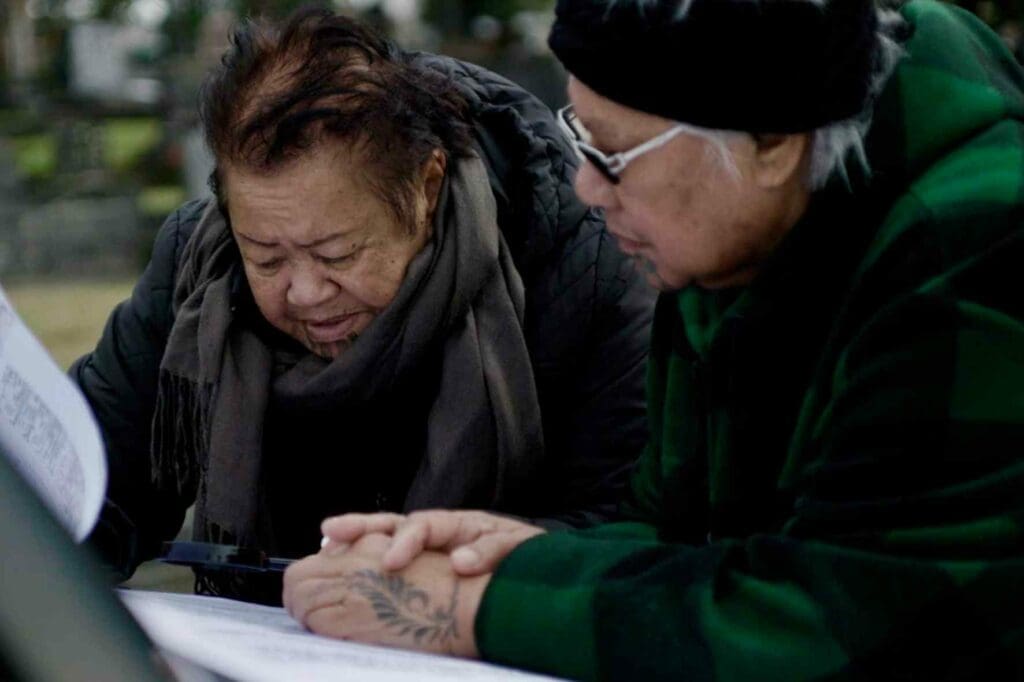The shocking – and very recent – racist history of Pukekohe, a suburb in the Auckland region, is the focus of the new TVNZ+ documentary, No Māori Allowed. From 1920-1960s, the town was segregated between Māori and Pākehā – a fact that many Aucklanders still don’t know. Catherine Tamihere, Ngāti Porou, the granddaughter of legendary Māori activist Dame Whina Cooper, talks to Capsule about her experience raising a family in Pukekoke and, as a parent and as a teacher, how to talk to kids about racism in Aotearoa.
“What kind of society do we want to be? Do we want to be a community that says ‘no, we don’t believe what you’re saying?’ Which then makes it way more traumatic, and means there’s intergenerational trauma,” asks Catherine Tamihere, Ngāti Porou, art teacher at a local high school and part of the new TVNZ+ documentary, No Māori Allowed. “Or do we want to say ‘We will listen to you’, which helps us our community then takes steps towards healing?’”
“It’s not about pointing the finger – because history is history, so to speak. It is what it is. But we’ll be judged on the way we handle this history,” Catherine says. “And that’s the thing with history: how do you fix today, if you don’t know about yesterday?”
‘That’s the thing with history: how do you fix today, if you don’t know about yesterday?’
When it comes to talking to our kids about racism – and, in particular, the roots that remain in Aotearoa, it can be hard to know where to start. For Catherine, the granddaughter of legendary Māori activist and Te Rārawa leader Dame Whina Cooper, she says she grew up knowing the world wasn’t a fair place. “But largely I stayed away from history… because I knew that it would hurt.”

It wasn’t until she went to teacher’s college in 2020 that the lessons of Māori and Pākehā history really started to hit home – in a class taught by experts from both sides of the equation. But it was real-life experiences that also made her realise just how on the surface that racism was and the sense of separation still existed.
“There are so many subliminal messages from parents, from the community, that filter through,” she says. “I had a class and I noticed that all the Māori kids were on one side of the room, and all the Pākehā kids were on the other side. I asked them: ‘Why do you guys sit like this?’ and they said, ‘Oh, we don’t know. We just don’t mix.’ So ever since then, I’ve always made a really conscious effort to mix classes up.”
But the more glaring example was when Catherine and her whānau moved from Papatoetoe to Pukekohe. She had heard the rumblings of Pukekohe’s difficult past – both her father and father-in-law had called Pukekoke “the most racist town in New Zealand” – but was blown away by just how often those past behaviours still influenced day-to-day life in the suburb, locked in the Auckland region.
“It was just straight off the bat – you could feel it, you could feel the racism, just from the way that people would look at you or talk to you. You’d walk into a shop and the shop assistant would say hello to everyone, and you’d be waiting for your smile and hello, and they would turn around and face the other way. Or having my pockets squashed down by someone because I beeped on the way out of the shop – even though I’d beeped on the way in, as well!”
‘Kids aren’t racist – but we have to watch what we say to them’
This is the focus of the TVNZ+ documentary, No Māori Allowed, which covers the history of Pukekohe and Catherine’s attempts, alongside No Māori Allowed author Robert Bartholomew, to set up a town hui to help the locals – both older generations and younger generations – reckon with the town’s highly segregated past. From the 1920s to 1960s, Pukekohe was a racially segregated town – schools, shops, public facilities like the local pool and movie theatre either had separate areas for Māori and Pākehā, or Māori were outright banned. You know all those terrible ‘Whites only’ signs we see in from the past in places like Apartheid South Africa and the USA? Well, all that existed within Pukekohe as well – and the scars, both literal and physical, remain.


It’s a past known deeply to those who lived it – but the knowledge has lessened outside of the suburb – but even with Pukekohe’s particular history, racism is still a reality for many in Aotearoa and it’s a mistake to think that kids aren’t aware of it from a young age.
“Kids aren’t racist – but we have to watch what we say to them, so that if they say something that’s a little bit off, it’s our responsibility to be like, ‘Hey, that’s not really okay and this is why,’ whether you then need to give a little history lesson as to why that’s not okay.”
When it comes to the rangatahi in Catherine’s art class – who are aged between 13-16 – she says that racism can be a pretty frequent topic of conversation, but a lot of it comes in the form of questions.
“I had a moment in an art class recently when I overhead the kids say ‘Hey, that’s racist’, and then I popped up and asked questions,” Catherine says. The comment in question? A kid stating that ‘all Black people are dangerous’. In these circumstances, Catherine says, it’s important to approach with curiosity, rather than judgement – because it leads to a conversation, not a lecture. “’What makes you think that?’ or ‘What makes you think that it’s okay to say that?’” Catherine says.
It was the same with the classroom that was segregated without a reason: just asking why? “That’s the point with just listening and enquiring – it’s never about telling someone off outright, it’s more like ‘I’m going to ask you some questions, and you might then come to a different conclusion.’”
Catherine is hopeful that the mandatory introduction of New Zealand histories into the school curriculum from 2023 will be helpful at providing kids with a wider perspective on our mixed bag of a historic timeline – and also help create a more inclusive attitude moving forward as well. “When I think of my schooling, it was very Pākehā. It would have been nice to learn about my own culture and for me not to feel like I had to park it up at the school gates.”
Because that feeling of being ‘other’ is not innate to kids, and neither is racism. It’s what they’re picking up from elsewhere. And so this when it becomes key to have those chats at home – and, like with most important topics, earlier than you think.
“There is nothing like the love that you have for your own child, so for parents it’s like, just imagine it was your child being treated that way. How would you feel if your child was made to feel that they were worthless, or ugly, or useless. Or that no matter what they do in life, they would never be good enough?” she says. “Because when our kids are in the community, they’re made to feel that way. And I know that, because I feel that way.”
“It’s about looking forward and asking, as a community, what can we do differently this time, so our kids never have to go through what we have had to go through.”
No Māori Allowed screens on TVNZ1 and TVNZOnDemand on October 18.

